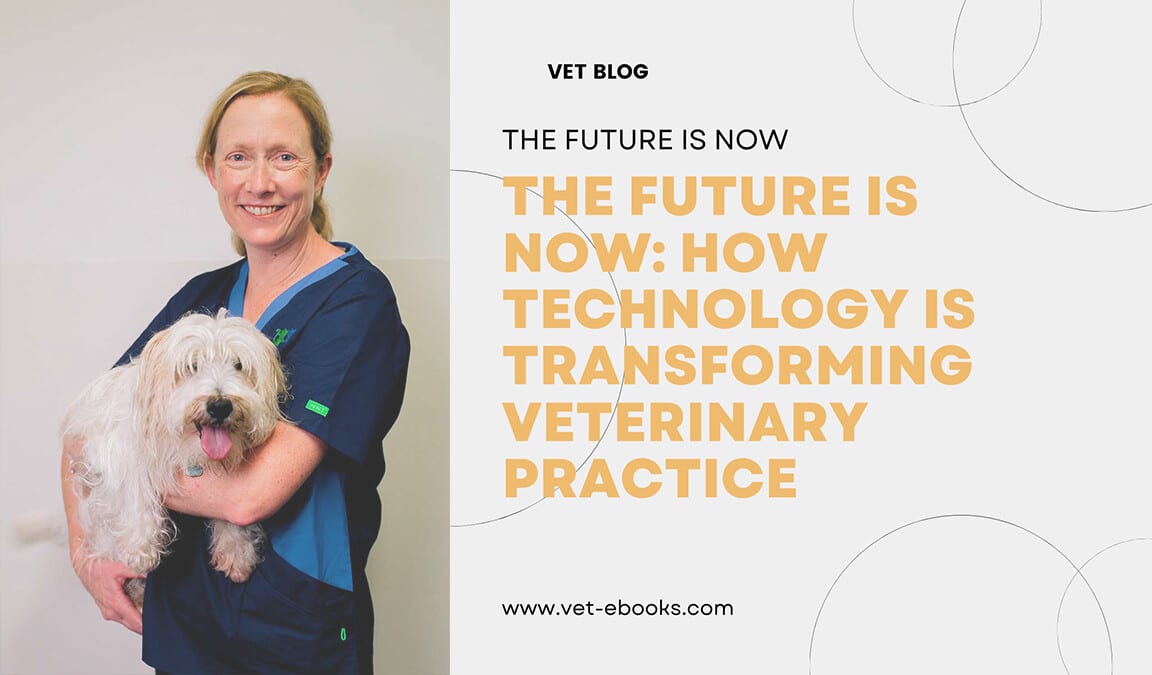
Technology is playing important role in all aspects of life and recently it began contributing to veterinary medicine. It is now transforming the way that veterinary practices operate. In this article, we will discuss the role of technology in veterinary medicine and How Technology is Transforming Veterinary Practices.
Here are some of the key ways that technology is being used in veterinary practice and how to use it:
1- Electronic medical records (EMRs)
Electronic medical records (EMRs) are computer-based systems that allow veterinarians to store and manage their patient’s medical records electronically. Many veterinarians are now using electronic medical record (EMR) systems to manage their patient’s records, which can make it easier to access and share information and improve the accuracy of diagnoses and treatment plans.
2- Telemedicine
Technology has made it possible for veterinarians to consult with colleagues and specialists remotely, using video conferencing and other digital communication tools. This can be particularly useful in rural areas where access to specialized care may be limited.
3- Diagnostic tools
Technology is also being used to develop new diagnostic tools, such as wearable sensors, advanced imaging techniques, and using ai in analyzing imaging which can provide veterinarians with more information about an animal’s health and help them make a more accurate diagnosis.
Some examples of how technology is being used in Diagnosis:
- Wearable sensors, such as smart collars and smart bands, can be used to monitor an animal’s vital signs and other health parameters.
- Advanced imaging techniques, such as magnetic resonance imaging (MRI) and computed tomography (CT) scans, which can provide veterinarians with detailed images of an animal’s body and help them make more accurate diagnosis
- Lab equipment used in veterinary medicine, such as automated blood analyzers and molecular diagnostic tools.
- Analyze large amounts of data collected from various sources, such as wearable sensors and electronic medical records, to identify patterns and trends that can help veterinarians make more accurate diagnoses and treatment decisions.
4- Surgical tools
Robotics and other advanced technology are being used to improve the accuracy and efficiency of surgical procedures in veterinary medicine. For example, robotic-assisted surgery can allow for more precise incisions and reduce the risk of complications. Also there are energy-based devices and laparoscopic instruments, which can make surgery less invasive and improve recovery times for animals.
We can’t forget Advanced monitoring equipment, such as pulse oximeters and blood pressure monitors to monitor an animal’s vital signs during surgery and help veterinarians to identify and manage any complications that may arise.
5- Animal welfare
Technology is also being used to improve animal welfare in veterinary practices through:
- The use of sensors and monitoring systems can alert staff to changes in an animal’s condition.
- Developing systems for controlling the environment in which animals are kept, such as systems for temperature and humidity control. This can help to ensure that animals are kept in comfortable and healthy conditions.
- Developing new ways of identifying animals, such as microchip implants and RFID tags, can help ensure that animals are properly cared for and returned to their owners if they become lost.
6- Training and Education
Technology has made it possible for veterinarians to access a wide range of educational resources and training materials online, helping them stay up-to-date on the latest advances in veterinary medicine.
7- Animal Communication
There are a number of technologies that have been developed to help humans communicate with animals, such as devices that translate animal sounds or behaviors into human language. These technologies can help veterinarians and animal trainers better understand and care for the animals they work with.
8- Genetic Testing
Technology has made it possible to analyze the DNA of animals to identify genetic abnormalities or predispositions to certain diseases. This can help veterinarians make more informed treatment decisions and improve the overall health of animal populations.
9- Prosthetics and Rehabilitation
Advances in technology have led to the development of advanced prosthetics and rehabilitation devices for animals, such as 3D-printed legs for dogs or specialized treadmills for horses. These technologies can help animals with injuries or disabilities regain mobility and improve their quality of life.
10- Virtual Reality
Some veterinarians use virtual reality technology to help train new staff or expose animals to new environments in a controlled setting.
11- Artificial Intelligence
There are a number of applications for artificial intelligence in veterinary medicine, including the development of diagnostic tools and the analysis of large data sets to identify patterns and trends.
Conclusion
Technology has played a significant role in advancing veterinary medicine and improving the care and treatment of animals. It has made it possible to diagnose and treat a wide range of conditions, as well as to track and understand the health and behavior of animals in a way that was not previously possible.
As a veterinary doctor, you have to know all new trends in veterinary medicine and know how to use them later in your practice That’s Why You Have To Read Books From Our Veterinary Books Library Online In Order To Increase Your Veterinary knowledge and Practical Skills. Click Here To Browse & Download +3000 Vet Books.

